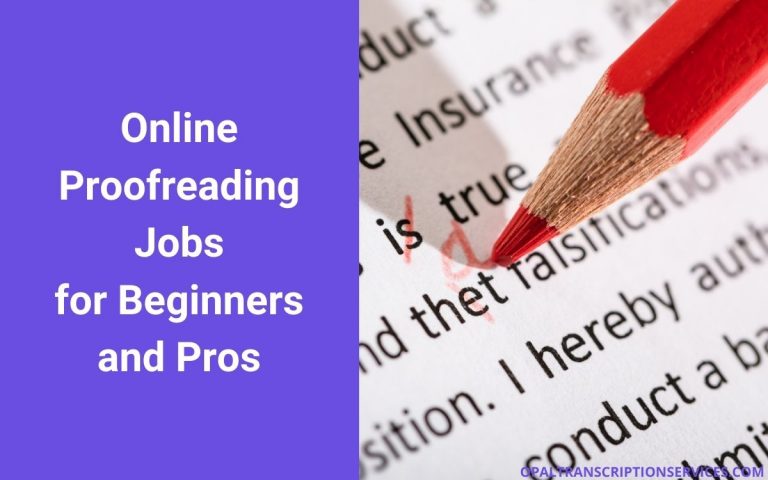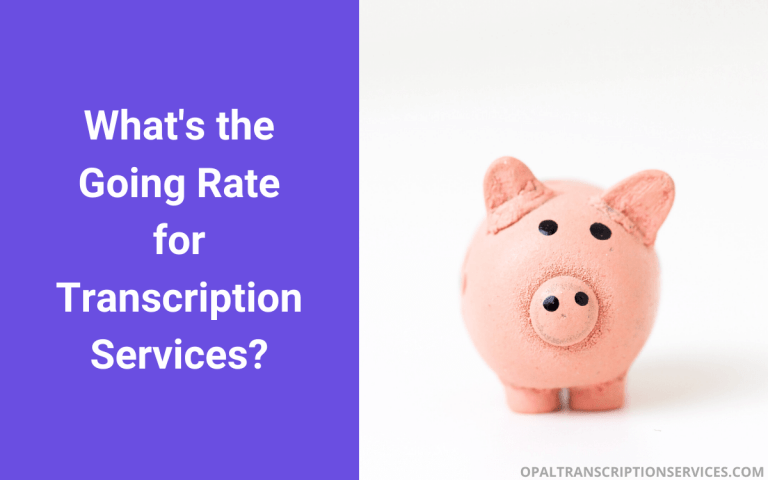How I Made 1000 Sales On Etsy in My First 6 Months
Etsy saw huge growth in new users during the pandemic, and it continues to be one of the most popular marketplaces for buying and selling digital and physical products online.
In this post, I’ll share my own experience with the platform, from selecting a niche to creating and marketing my products, getting my first positive reviews, and growing my Etsy business.
I started my Etsy shop selling digital products on a whim with absolutely no background in graphic design or marketing. I just opened a Canva premium account and started to create one day. Little did I know I’d make 1000 sales in the first six months of starting my shop.
I truly believe that anyone can start a side hustle and find success. In this post, I’ll be teaching you what helped me reach my first 1000 sales on Etsy, and hopefully these tips will help you find success too.
10 tips for how to get more sales on Etsy
1. Choose a profitable niche for your Etsy store

When you’re starting an Etsy shop, you want to make sure you choose a profitable niche that’s low competition and high in demand. A niche is a focused area within a larger market for a product or service. Niching down reduces competition and lets you tailor your products and marketing strategies to a specific audience.
For example, let’s say you have an interest in selling “editable invitation templates” on Etsy. This is a very broad category! If we narrow it down a bit from there, a niche could be “wedding invitation templates” or “birthday invitation templates.” These are niches that you could look into building your Etsy business around.
Choosing a profitable niche on Etsy is crucial to the success of your shop. You might be wondering: How do I find a profitable niche? I honestly had no idea what I wanted to create when I first started, so I brainstormed and eventually narrowed it down to three different niches.
Here are a few examples of popular niches on Etsy:
- Crochet plushies
- Product logo templates
- Health and fitness workbooks
- Digital planners
- Therapy wall art prints
- Handmade minimalist jewelry
I’d encourage you also to brainstorm three to five niches and write them down on a sheet of paper. Then go ahead and put each niche in the Etsy search bar and see what comes up. If there are more than 5000 results that show up, then you know this is a niche that’s profitable.
As you’d expect, the more profitable the niche, the higher the competition tends to be; however, there are hidden gems waiting to be discovered in every market. You can use an Etsy keyword research tool to dig deeper and get data on high-demand, low-competition products and niches for your Etsy business.
2. Experiment with different sub-niches
Once you’ve chosen a main niche, you can then experiment with selling products in different sub-niches. I like to think of it as not putting all your eggs in one basket.
For example, if you chose the niche “health and fitness digital products” and you decide to only create “fitness workbooks,” you’re putting yourself in a very small box. As with many other types of businesses, it’s important to strike the right balance between going narrow and going too narrow.
In this case, I’d recommend choosing two to three different types of printable workbooks to create, such as fitness workbooks, mental health workbooks, and wellness workbooks. These are all within the same niche of “health and fitness digital products.” By doing so, you’re expanding your opportunities for potential Etsy shoppers to find you.
Now let’s get even more specific! Taking the sub-niche of fitness workbooks, you could actually break it down into 10 different digital products:
- Fitness tracker worksheet
- Fitness journal digital
- Fitness journal printable
- Fitness guide
- Weekly fitness tracker
- Water intake tracker
- 30-day fitness challenge
- X-week cardio challenge
- Fitness challenge worksheets
- Body measurement worksheet
You can see that there are so many different products you can create within each sub-niche. So experiment, experiment, experiment!
For me, I kept creating new versions of the products within my chosen sub-niches using different designs and colors. This eventually helped Etsy understand my main niche, and I started to rank in those sub-niches because I was constantly using the same primary SEO keywords and other relevant keywords in my listing titles, tags, and descriptions.
Soon enough, people started to see my products on the first page because I had so many digital products focused on those sub-niches. This is what helped me get my Etsy shop noticed in the beginning.
Pro tip: Choose two to three different sub-niches and create 10 different products within each sub-niche.
3. Create professional-looking Etsy listings
Listing photos on Etsy are photos of what your product looks like. They can also contain additional useful information about your product in graphical format, such as a features list or FAQ.
I want to tell you how crucial your listing photos are, because they really can make or break your shop.
Continuing with the above example of fitness digital products, let’s say a potential customer searches “fitness planners” and they see two products next to each other: One of them looks professional and lists all the important features of the product, while the other listing photo doesn’t tell much about the product.
Which one do you think the buyer will choose? Probably the first one, right?
That’s why you really need to set yourself up for success before you decide to publish your listings. Honestly, this was kind of a pain for me because it already took so much time for me to create my product.
Since I sold digital wall decor, I needed professional-looking mockups for my products. I spent a few dollars investing in mockup photos that other Etsy sellers sold, which saved me so much time. I also looked at some of my competitors’ listing photos to see what they usually include.
Here’s what I would recommend that you include in your listing photos:
- Four listing mockups to showcase your product
- A “What’s Included” image to show customers what features come with your product
- A “How to Download” image (if you create digital products)
- A “FAQ” image (if you feel like your customers would have questions about the product, you can answer them on a listing photo)
These are the most common types of listing photos you’ll see on Etsy. You can create templates for each of these listing photos using a free tool like Canva. This way, you can easily make adjustments for each new product you publish.
4. Boost Etsy sales with a huge discount

One of the most effective marketing strategies I used in the beginning was to run a sale.
This is one of the first things I did, and I still run sales very often in my store. On Etsy, you can offer a discount from 10% all the way to however much you decide. I would suggest starting in the 50-70% discount range, depending if your product is digital or physical.
When you’re just starting off, I highly advise against focusing too much on profits, because chances are it’s going to be slow at first. What you want to focus on is getting your initial sales and positive reviews. This is because Etsy’s market is so competitive that if you look at your competitors, they’re probably already selling their items at a low price. It’s really hard to compete with that as a brand-new seller with no track record on Etsy.
What I did was price my items slightly higher, and then I would offer a 50-70% discount that was a better discount than my competitors were offering. This would make potential customers feel like they were getting a great deal. (If you sell physical products, you can also consider offering free shipping.)
Keep in mind that when you offer a huge discount, your profit margins will be very small, meaning you might only make a few cents. But I promise that later on, once you get more sales and positive reviews, you can start to decrease your sale discount percentage and people will continue to buy.
This strategy helped me so much with my own growth, because people would buy my products instead of my competitors’. One of the things that made me stand out from other sellers was how big of a discount I was offering. Of course, I made sure my listings looked professional and high-quality as well.
5. Promote your products on social media platforms
Social media is a powerful channel for getting your products out there in front of potential Etsy buyers. TikTok, Instagram, Facebook, X (Twitter), Pinterest, and YouTube are all platforms that can help boost your Etsy shop’s visibility.
When using social media, always keep in mind that you’re marketing to the right audience. That means please do not put your Etsy store link in the bio on your personal Instagram account. I see so many people do this, but what are the chances that a stranger will click on it and actually buy something?
For best results, I would advise that you create a social media account (or accounts) dedicated to your Etsy shop, and each time you publish a new product, remember to promote it on the platform.
For help creating and scheduling social media content quickly, check out our top-recommended AI social media tools.
6. Use video marketing

If you sell physical products, that’s a great opportunity for you to create videos of you using your product and share them on social media platforms like TikTok, Instagram, or YouTube.
Digital products are sometimes harder to showcase in a video. But if you create digital planners, then that’s a different story – videos of you using digital planners can be such an effective marketing strategy.
On the other hand, if you sell ebook templates, then Pinterest would be more effective. If you’re not sure whether video marketing will work for you, have a look at what top sellers in your market are doing, and don’t be afraid to experiment until you find what resonates with your audience.
To automate video creation, check out our favorite AI-powered video generators.
7. Focus on getting your first positive reviews
In the beginning, I believe that getting your first initial positive reviews on Etsy is way more important than how much you’re making in profit. Reviews build credibility and trust between you and your customers.
For example, if you came across a store that had 100 reviews and another store that had two reviews, who would you buy from? That’s why so many top 1% Etsy sellers have thousands of reviews on their shops. These reviews entice buyers to trust the Etsy store and its brand.
So how do you get your first initial Etsy reviews? The easiest way is to ask your family and friends.
There are so many advantages in utilizing your personal network and community to build your Etsy business. Chances are your family and friends would be more excited and willing to buy your products on Etsy than a stranger who sees that you have zero reviews.
You can tell them that you started an Etsy shop and you’d appreciate it if they could support you. I would set a goal to reach out to five to 10 people in your community. Seriously, get those reviews.
When I did this, I was timid to ask at first because I didn’t want my circle of friends to know I started a shop. But I really wanted to see growth with my shop, so I asked them, and three of them happily said yes! They reviewed my products, and it was from there that I started noticing a rise in sales. It’s crazy how much reviews can make a difference.
So once I got my first few sales and reviews, I started manually reaching out to actual customers via message. I would ask them if they could review my products after purchasing, and 50% of them would actually do so.
I promise you that once you get those first reviews, you will start to see growth in your store. Don’t negate the importance of Etsy reviews.
8. Add new products to your Etsy shop daily

If you’re serious about starting a side hustle, don’t treat your Etsy shop like a hobby. You want to treat it like a business! You have to get into the right mindset, which is that starting a business takes a lot of effort, consistency, and patience.
That means creating products even when you don’t feel like it. In the beginning of my Etsy journey, I created a digital product every single day for five to six months straight. I even created them on the weekends, no matter how little time I had.
So if you really are serious about growing your Etsy shop, treat it like a business and create daily. Don’t give yourself excuses – and even if you don’t see any growth in the beginning, don’t stop! Just like any business, an Etsy store takes time and effort to grow.
9. Be patient and consistent

What will set you apart from other Etsy sellers is consistency. I’ve seen so many stores take off in the beginning, but then the seller suddenly stopped creating. Obviously, life happens – they might not have had the long-term goal of growing their business on Etsy.
But if you’re reading this, chances are you really want this to work. Maybe you’ve seen so many Etsy success stories, and you want that to be your story as well. It can be! So don’t quit when you’re just getting started. It usually takes about three months, give or take, for Etsy shops to get noticed and gain traction with Etsy’s algorithm.
You really never know if two months down the line, had you not quit, that’s when you could have hit peak sales on Etsy. If I had stopped creating products three months in because I wasn’t seeing progress, then I never would have known what it was like to hit 1000 sales.
10. Don’t compare your journey to someone else’s
It’s so easy to compare the number of sales you get to your competitors. Trust me, I still do this, and it’s so tempting to let feelings of jealousy come up. But comparison doesn’t get me anywhere, nor will it get you anywhere. The best thing you can do for yourself is to focus on creating.
Instead of comparing your shop to another, try to seek inspiration from your competitors instead. I know it can be hard, but when you’re searching for products to create, see what your most successful competitors are doing right.
And when you see these successful Etsy sellers that teach you how to make $1000 in a day or make 100 sales in a day, try to shut that out and just focus on creating. Progress and success looks different for everyone. Just because success to one person is making 100 sales in one month, that doesn’t mean that everyone else should have the same goal.
Etsy FAQs
How do beginners get sales on Etsy?
It’s tough for new Etsy sellers to compete with established shops that already have tons of positive reviews. So in the beginning, consider offering discount codes to make your first few sales, and then ask your customers for reviews. This will boost your shop in Etsy’s algorithm more quickly. As your positive reviews grow, prospective buyers will be more likely to choose your products over your competitors’.
When do Etsy sales pick up?
It can take two or three months for new Etsy shops to pick up in Etsy’s algorithm. Sales and reviews speed up this process, so it’s important to create and list new products consistently, optimize your listings using Etsy SEO best practices, offer discounts to maximize your initial sales, and focus on getting positive reviews. This strategy will help you increase your Etsy sales as a new seller.
Why are my Etsy sales so low?
According to Etsy, a drop in sales can be due to multiple factors, including an increase in competition or a change in the market. If you notice a drop in sales or traffic to your store, consider improving your listing quality and marketing your shop using the methods discussed in this article. You can also consider boosting your top-selling products using Etsy ads.
Final thoughts
For me, hitting 1000 sales in a short span of time was wild, since it was my first business. I learned and grew a lot from starting an Etsy shop, and these are the key takeaways I want to share with you today:
- Choose a profitable niche
- Experiment with different sub-niches (choose two to three to start off with and create 10 different products in each sub-niche)
- Create high-quality, professional listing photos
- Stand out by offering coupon codes and huge sale discounts
- Choose a social media platform to market your shop to the right audience
- Create and share videos of yourself using your product
- Reach out to family and friends for your first reviews
- Treat your shop like a real business and work on creating products daily
- Be patient and consistent
- Don’t compare your success to someone else’s
Let me just say it is possible to grow your sales and make money on Etsy! You just need to be patient, consistent, and determined. If I can do it, you certainly can.
I hope you’ve found these tips helpful!
Author bio:

Melanie Renee is the founder of UpTheSideHustle, a website dedicated to helping students kickstart a profitable Etsy shop selling digital products. She is passionate about teaching people how to turn their dreams and creativity into a thriving source of income. You can also find her on YouTube.






